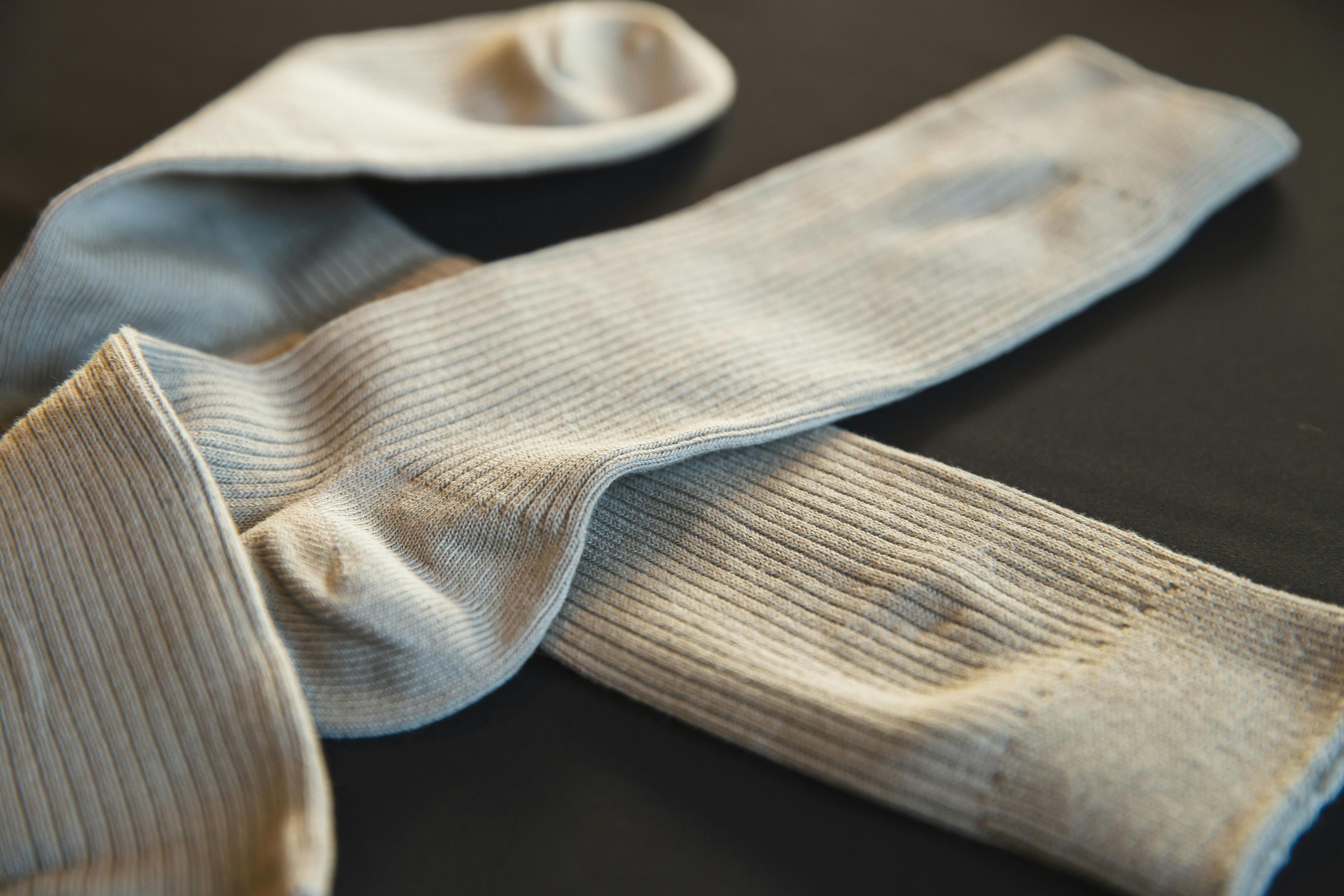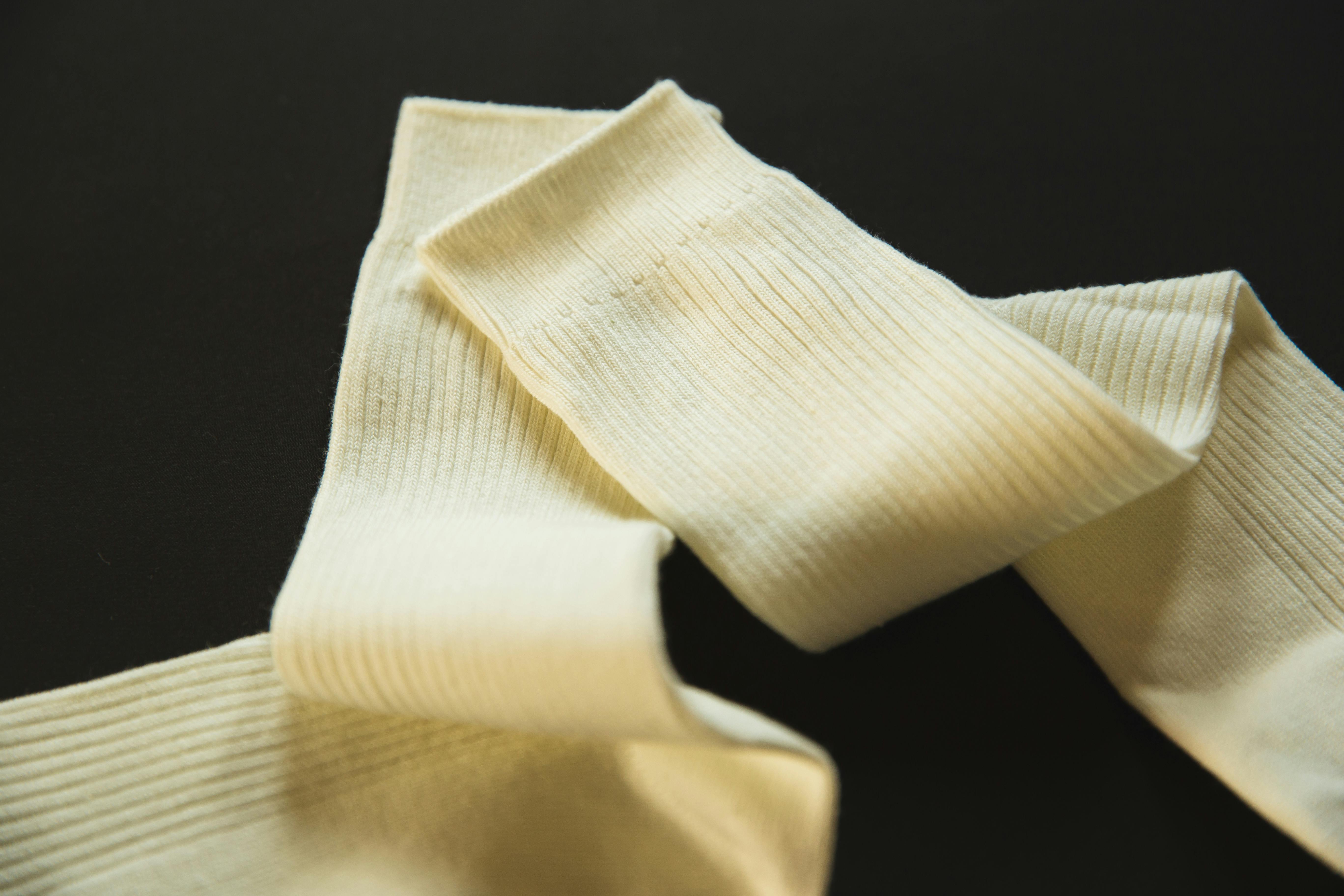How Long To Wear Compression Socks After Total Knee Replacement

Wearing compression socks after a total knee replacement can be an important part of the recovery process. Compression socks provide support and help reduce swelling, pain, and discomfort in the affected area. It is important to wear these socks for the recommended amount of time in order to maximize their benefits. This article will explain how long to wear compression socks after a total knee replacement.Compression socks are specially designed hosiery that provide extra support to the muscles and veins in the legs. They are made up of thicker, elastic fabric that fits snugly around the ankle and calf and gradually decreases in pressure as it goes up the leg. This compression helps reduce swelling and fatigue while also providing support to help prevent deep vein thrombosis (DVT). Compression socks are available in a variety of colors, lengths, and sizes and can be worn by both men and women.
Benefits of Wearing Compression Socks After Total Knee Replacement
Total knee replacement (TKR) surgery is a major procedure that can significantly improve mobility and relieve pain for those who are affected by degenerative joint disease. However, recovery from TKR can take several weeks or even months, and during this time, many patients experience swelling and discomfort in their knee joints. One way to help reduce the swelling and discomfort associated with TKR surgery is to wear compression socks. Compression socks are designed to provide a light pressure on the leg that helps reduce inflammation, improve circulation, and provide support while walking or standing. Wearing compression socks after total knee replacement is beneficial in several ways.
First, wearing compression socks helps reduce swelling in the leg and knee area following TKR surgery. Compression socks are made from an elastic fabric that provides a gentle pressure to the skin which helps reduce fluid buildup in the area around the knee. This can help reduce inflammation and discomfort associated with TKR surgery.
Second, wearing compression socks can help improve circulation in the leg following TKR surgery. Compression socks put gentle pressure on the skin which encourages blood flow throughout the leg and foot area which helps with healing and reduces pain levels. Improved circulation also means that nutrients and oxygen are delivered more efficiently to the muscles in the legs which can help reduce stiffness after surgery.
Finally, wearing compression socks after total knee replacement can provide additional support while walking or standing. The gentle pressure of a compression sock will help keep your knee joint stable as you move around. This additional support may help reduce fatigue during activities like walking or standing for long periods of time.
In conclusion, wearing compression socks after total knee replacement can be beneficial for reducing swelling, improving circulation, and providing additional support when walking or standing. Patients should talk to their doctor before using any type of medical device like a compression sock to make sure it is safe for their individual situation.
How to Wear Compression Socks After Total Knee Replacement
Compression socks are a great way to help reduce swelling and improve circulation after a total knee replacement. Wearing them can speed up the healing process and help reduce pain and discomfort. It is important to know how to properly wear compression socks after a total knee replacement in order to get the most benefit.
The first step in wearing compression socks is to choose the right size for your leg. The best way to determine your size is by measuring your calf circumference or ankle circumference with a tape measure. Once you have determined your size, you will need to purchase the appropriate compression sock for your leg size.
The next step is to put on the compression sock correctly. Start by sitting down with your legs outstretched in front of you and hold one end of the sock open wide. Place the heel of the foot inside the heel cup of the sock and carefully slide it up over your calf or ankle until it reaches just below your knee. Make sure that there are no wrinkles or folds in the fabric as this can lead to discomfort when worn for an extended period of time. Once in place, adjust as needed for comfort until it feels snug but not too tight.
It is important that you wear your compression sock every day for at least four weeks after your total knee replacement surgery in order to get maximum benefit from it. It should also be removed at night before going to bed so that it does not cause any damage or discomfort while sleeping. Additionally, if you notice any signs of skin irritation or redness, discontinue wearing immediately and consult with your doctor before continuing use again.
Compression socks are a great way to help reduce swelling and improve circulation after a total knee replacement surgery. Following these steps will ensure that you are wearing them properly so that you can get the full benefits of using them after surgery.
How Long Should You Wear Compression Socks After Total Knee Replacement?
Compression socks are an important part of post-operative care after total knee replacement surgery. They help reduce swelling and provide support to the knee joint to help it heal faster. The amount of time you should wear compression socks after total knee replacement surgery will depend on the individual’s recovery and the type of compression sock prescribed. Generally, wearing compression socks for at least six weeks is recommended as part of the post-operative care.
The type of compression sock prescribed depends on the person’s individual needs and their doctor’s advice. For example, some people may need more support than others or may have a history of developing deep vein thrombosis and need a higher level of support. It is important to speak to your doctor about what type of compression socks are best for your recovery.
The length of time you should wear compression socks after total knee replacement surgery can also vary depending on how long it takes for your knee to heal fully. Generally, most people can stop wearing them after six weeks, but some people might need to wear them for longer if their recovery is slower or they have more severe swelling or pain in their knee joint. It is important to follow your doctor’s instructions and wear them as long as needed until your knee has healed fully.
Compression socks are an important part of post-operative care following total knee replacement surgery and can help reduce swelling and provide support to the joint while it heals. The amount of time you should wear them will depend on your individual needs and recovery time, but typically they should be worn for at least six weeks post-operatively as part of your post-operative care plan.
Common Side Effects of Wearing Compression Socks After Total Knee Replacement
Compression socks are often recommended for those who have recently undergone a total knee replacement. These socks help to provide extra support and stability to the knee joint, which can help reduce pain and swelling. However, there are some side effects that may occur with the use of compression socks after total knee replacement. These include:
Skin irritation: The pressure of the compression socks can cause some discomfort or skin irritation in the area where the sock is worn. This is usually temporary and can be managed by wearing a softer fabric or using a topical cream.
Skin discoloration: The pressure from the compression socks can cause discoloration of the skin due to increased blood flow in the area. This is usually temporary and will fade over time.
Bruising: Compression socks can cause bruising due to increased pressure on surrounding tissues. This should improve over time as your body adjusts to wearing the socks.
Pain: Some people may experience increased pain in their knee area when wearing compression socks due to increased pressure on joints and muscles. This should improve as your body adjusts to wearing them.
Itchiness: Compression socks may cause some itchiness in certain areas where they are worn due to friction between skin and fabric. It is important to keep your skin clean and dry while wearing compression socks, as this can help reduce itchiness.
If you experience any of these side effects, it is important to speak with your doctor or healthcare provider about how best to manage them so that you can continue enjoying the benefits of wearing compression socks after total knee replacement surgery without any discomfort or other adverse effects.

When To Stop Wearing Compression Socks After Total Knee Replacement
Compression socks are often recommended for those who have recently undergone total knee replacement surgery. Compression socks help to reduce swelling and aid in the healing process after surgery. They can also be beneficial for relieving pain and providing support to the joint while it is healing. The duration of time that one should wear compression socks after surgery varies from person to person, but most doctors recommend that they be worn for at least a few weeks or until the swelling has completely gone down.
It is important to remember that compression socks should not be worn continuously for more than a few hours at a time. Doing so can cause discomfort and can interfere with circulation in the leg. It is best to remove them after a few hours, or when you notice any discomfort.
Most people can stop wearing compression socks after they have healed sufficiently from their total knee replacement surgery, usually after about six weeks or so. However, some people may require longer periods of time before they can safely stop wearing their compression socks. It is important to consult with your doctor to determine when it is safe for you to stop wearing your compression socks.
In some cases, your doctor may suggest that you continue wearing your compression socks even after your knee has healed sufficiently from the surgery. This may be necessary if you have had complications such as infection or blood clots following the procedure, as these complications can increase the risk of further injury or swelling if you do not wear support stockings.
The bottom line is that it is important to follow your doctor’s instructions when it comes to when and how long to wear compression socks following total knee replacement surgery. You should always consult with your doctor before making any changes to your post-operative care plan, including when it is time to stop wearing compression socks.
Alternatives to Wearing Compression Socks After Total Knee Replacement
Compression socks are widely used post-surgery for total knee replacement, as they help reduce swelling and provide support. However, there are other alternatives that can offer similar benefits without having to wear socks. One option is to use an ankle brace, which helps provide stability and support while applying pressure that can help reduce swelling and discomfort. Additionally, there are elastic bandages or wraps that can be used to help keep the knee joint secure and comfortable. These bandages may also be beneficial in helping manage swelling or pain after a total knee replacement.
Another alternative is an inflatable brace, which provides adjustable compression and support around the knee joint. Inflatable braces are designed to fit snugly around the leg to provide secure compression while allowing for mobility of the knee joint. They can also be adjusted based on individual needs for additional support or comfort. Finally, a neoprene sleeve may also be worn post-surgery to provide additional warmth and comfort while helping to prevent swelling. These sleeves are designed with adjustable straps for optimal fit and comfort, and they can be worn over compression socks if additional support is needed.
While compression socks are widely recommended following total knee replacement surgery, there are several alternatives available that may offer similar benefits without having to wear socks. Whether it’s an ankle brace, elastic bandage or wrap, inflatable brace or neoprene sleeve – each of these options can help reduce pain and discomfort while providing additional stability around the knee joint post-surgery.
Tips for Maximum Comfort When Wearing Compression Socks After Total Knee Replacement
Compression socks are a great way to add support and comfort following a total knee replacement. Compression socks help reduce inflammation and swelling, and can also help with pain management. Here are some tips to ensure maximum comfort when wearing compression socks after total knee replacement.
First, make sure that you are purchasing the correct size. Compression socks come in a variety of sizes, so it is important to measure your calf circumference before purchasing. If the sock is too tight or too loose, it will not provide the necessary support and may be uncomfortable to wear.
Second, choose the right material for your needs. Compression socks are typically made from either cotton or synthetic materials. Cotton is more breathable and lightweight, but synthetic materials offer more compression and support. Choose the material that best fits your needs and lifestyle.
Third, wear the socks during any activity that requires you to be on your feet for prolonged periods of time. This includes walking, running, or just standing for long periods of time. The compression provided by the sock will help reduce swelling and improve circulation in your legs, which can help reduce pain after knee replacement surgery.
Fourth, remove the compression socks at night when you go to bed as they can become uncomfortable if worn during sleep. This will also give your legs an opportunity to relax and recover from the day’s activities.
Finally, make sure that you wash your compression socks regularly in order to keep them clean and free from bacteria and dirt buildup which can cause skin irritation or infection.
Following these tips will ensure maximum comfort when wearing compression socks after total knee replacement surgery. Compression socks provide great support following surgery while helping reduce inflammation and swelling in your legs as well as improving circulation which can help with pain management.

Conclusion
Compression socks can be a great asset when recovering from a total knee replacement. However, they should not be worn for too long or too short of a period of time. After surgery, it is recommended to wear the compression socks for the first four weeks as prescribed by your doctor. After that, you should continue to wear them for an additional two weeks if needed. The amount of time you need to wear them will depend on your individual situation and the advice of your healthcare provider. Compression socks can help reduce swelling and promote circulation, which may ultimately contribute to a speedy recovery.
It is important to remember that although compression socks may offer comfort and relief during recovery, they are not a substitute for medical advice from your doctor or physical therapist. As always, speak with your healthcare provider before starting any new exercise routine or treatment plan. With careful use and guidance from your healthcare team, compression socks may be an excellent tool in aiding your recovery after total knee replacement surgery.
